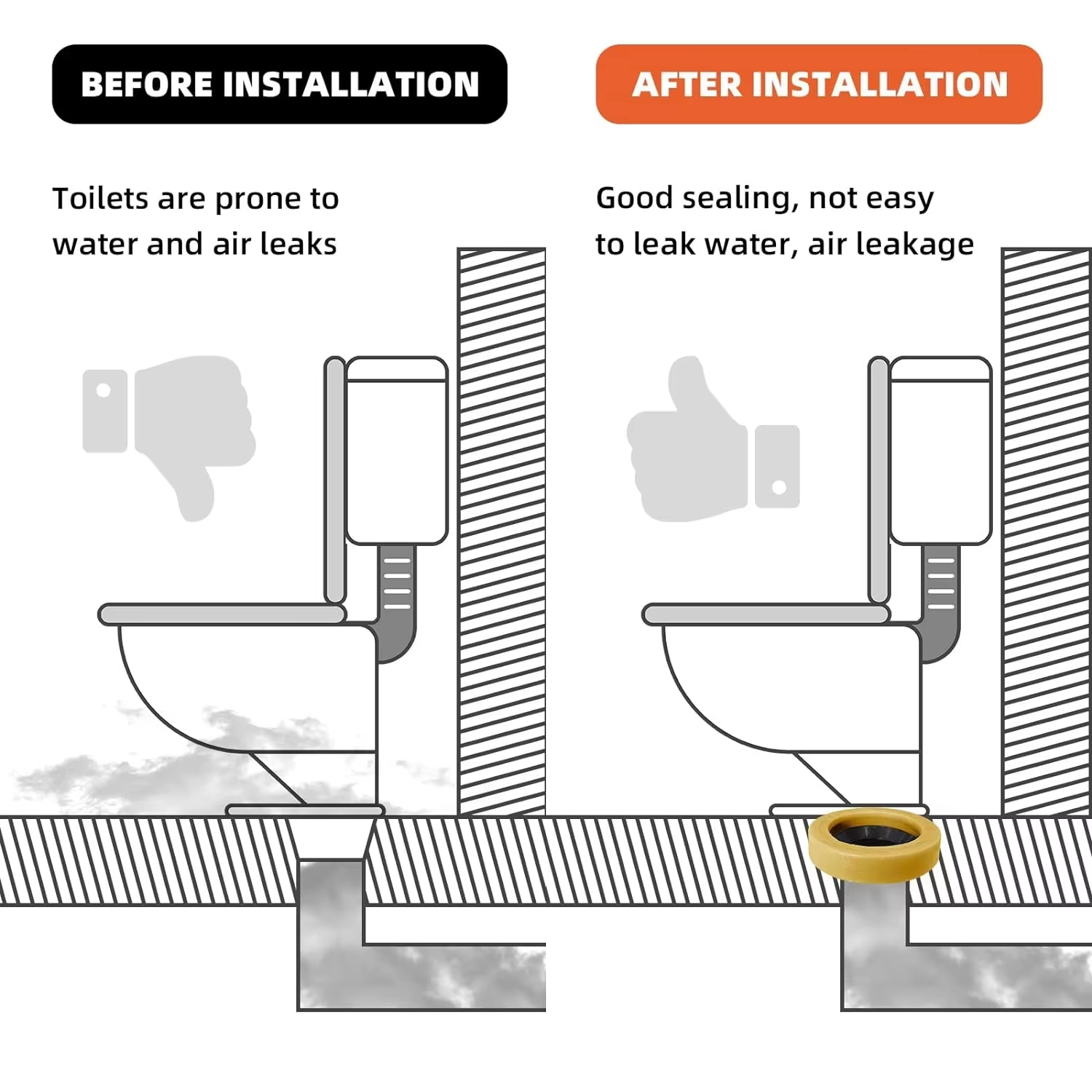Toilet Flange Diagram Explanation. A toilet flange does a lot of work because it attaches the toilet to both the plumbing and the floor of the restroom. It prevents leakage at the joint while also keeping the appliance in position. However, if the seals are bad or the set does not work optimally, it will lead to irreparable damage… like trapping water under the foundation of the building. In this article, we will explore the cost implications of a broken toilet flange, how to tell if it is broken, and how to mitigate the damage.
A toilet flush flange, also called a closet flange, is a component of the toilet with a cut out for the drain located at the back. And, just like everything else in the toilet, The flush flange is mostly made with PVC or plastic. Fitting into it is a metal piece or at least a composite, which is quite the norm. The tank, actually a specific part of the toilet, holds the toilet in place. Bolting is a key feature that holds the tank in place wipe the bolts enable the flush skirt set. Sagging bolt flanges can lead to broken mounts which drain excessive water. Combined with rot, these internal damages create a structural framework that is internal damage mold outbreaks.
Typical Signs Of Water Damage
Have you ever seen water rings on lights and hooks or the ceiling below the bathroom? That is an indicator of a water damage problem that the toilet is leaking. Symptoms could be:
Weak flush: The weak flush functionality of the toilet could be caused due to failure of effluent transfer systems, also referred to as a Failing Toilet Flush or it can be termed as Foul Toilet Flush.
Eerier smell: If you, gentlemen, have had the misfortune of smelling anything else other than lavender emanating from your restroom, you smell sewer gas which enters through the seal causing what is known as Negligent Toiler Flushing. Dispel fantasies about sewage not releasing odors, because if toilets were capably engineered to permit emission through an unsealed eye, they would stink profusely. Smart, savvy, but unremarkably skilled, that is what the measurements engineered within these bowls allow for.
Visible gaps: The gaps in the toilet indicates that a flange might be broken or misplaced.
Failing Toilet Flange – You Are Overlooking It’s Consequences
The further you ignore the signs indicative of toilet flank deterioration, the worse problems you will have to tackle lateron. Not only do you think a broken or damaged toilet flank will cost you next to nothing in repairs or replacements, but the constant leaks will, over time, cause substantial harm. The most critical impact is water damage. This shall result in weakened structural strength which will be expensive to repair. The cost of cleaning mold and replacing the floor, coupled with wall damage, will run into thousands. Plumbing works further compound the problem and is extremely disruptive to everyday activities. On top of all these, bathroom operations become extremely challenging.
Proactive Approach to Toilet Flanges Maintenance
To prevent the financial implications of a failing toilet flange, these concerns need to be addressed beforehand by the homeowners. Regular checkups along with monitoring of the toilet and toilet flange are of essence, as well as ensuring a quality made flange during renovations. Any signs of a failing toilet flap should immediately seek the assistance of a professional plumber.
Trends and Changes in the Industry
The plumbing industry is always changing due to new technologies and materials. There is always space to make the reliability and dependability of toilet flanges better. Adjustable and flexible height flanges, for example, now are incredibly easy to install and can vertical traverse through multiple floors. They are also being manufactured from non-corrosive materials, which makes leakage or damage less likely. With the growing awareness among homeowners about proper toilet flange installation, also the demand for plumbing technology rises. Thus, further advancements can be expected in the plumbing industry.



